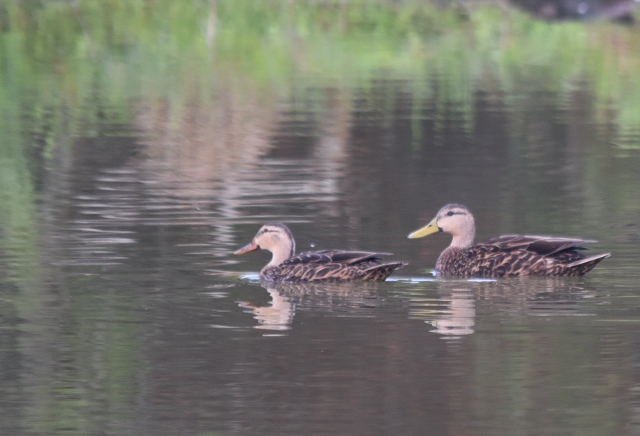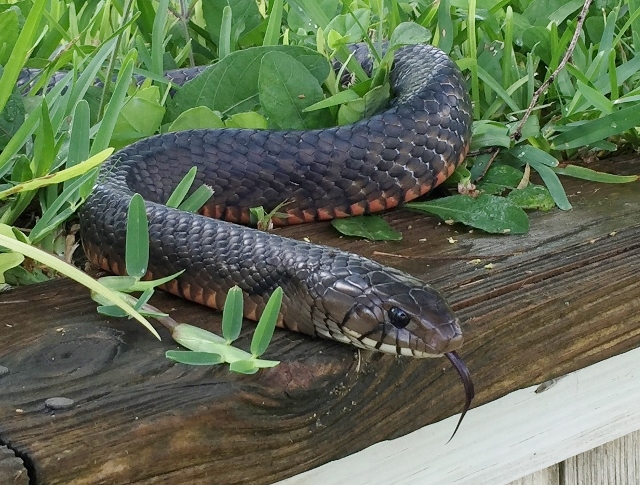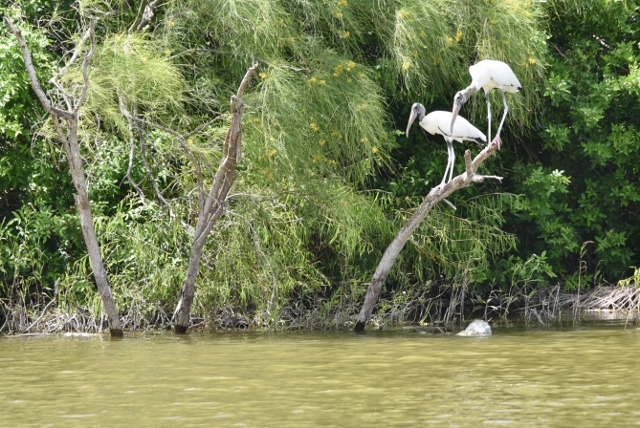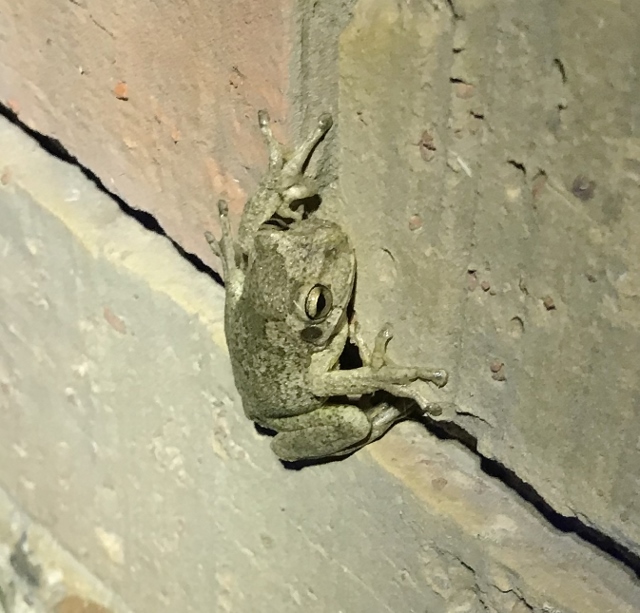Texas hosts well over 1,300 species of animals and plants that are considered to be Species of Greatest Conservation Need (SGCN), along with species that have been afforded legal protection (Federal and State Listed Species) due to risk of extinction.
When we’re all out for the four days photographing during this year’s City Nature Challenge, we can Be on the Look Out for these species.
Documenting and uploading eco-regional observations to www.iNaturalist.org is another important aspect of how iNaturalist helps scientists and conservationists — awareness of species that are threatened, endangered or in danger of becoming extinct.
City Nature Challenge dates to photograph wildlife are April 30 to May 3, 2021. After that, the next five days can be used to upload observations to iNaturalist.

I was surprised to learn that one of our frequent resaca visitors/pseudo permanent resident ducks is on the SGCN list: mottled duck, (Anas fulvigula).
The ducks are listed SGCN as globally (status) 4 and state of Texas (status) 4B (breeding), which means they are apparently secure although still included in the list of species of greatest conservation need.
Most of the year, we can count on seeing two or three mottled ducks. This month, on some days, I’ve seen seven or more floating in the distance on the resaca.
Another SGCN surprise was noting that the Texas indigo snake (Drymarchon melanurus erebennus) is on the list. It is in global category 4 and state status 3. I know it is illegal to kill an indigo snake but did not realize it was on the SGCN list.

The Texas Parks and Wildlife Department link about SGCN is at this link:
https://tpwd.texas.gov/huntwild/wild/wildlife_diversity/nongame/tcap/sgcn.phtml
“Native animals or plants designated as a SGCN are generally those that are declining or rare and in need of attention to recover or to prevent the need to list under state or federal regulation,” according to information on the Website. “These species are the focus of Texas Parks and Wildlife Department’s Texas Conservation Action Plan and guide the department’s nongame conservation efforts.” Once on the Webpage, scroll down to the second section and the link for Southern Texas Plains SGCN for the list of Rio Grande Valley ecoregion of listed species.
Conservation status key of a species is designated by a number and a letter. G for its global status and S for its status in the state of Texas. The numbers designate a species’ level of criticality.
- 1 — Critically imperiled
- 2 — Imperiled
- 3 — Vulnerable
- 4 — Apparently secure
- 5 — Secure
Species not listed are considered not in need of special legal federal or state protection at this time.
The state maintains a fairly current and updated list with some regularity, including species they think require T (threatened) and E (endangered) status; the most current is as of March 30, 2020, at the following link:
Wood Storks (Mycteria Americana) and the common Mexican tree frog (Smilisca baudinii) are both included in this lengthy list in a threatened status.


Wood storks are visitors to the LRGV and only stop on their way elsewhere.
I’ve seen the common Mexican tree frog on our property a couple of times but most notably last summer when I would check my mothing sheet in the wee hours of the morning. A nocturnal species, its northern most range is the Lower Rio Grande Valley.
The rank key is at this link:
One of our favorite speakers, nature guide, birding expert and iNaturalist trainer, Quinta Mazatlán’s Urban Naturalist John Brush, has posted a welcome and information on www.iNaturalist.org here:
https://www.inaturalist.org/projects/95248/journal/48540
In addition, John Brush, who is the area City Nature Challenge co-chair, will be instructing, via Zoom, iNaturalist training with the McAllen public library on Saturday, April 17 from 2 to 4 p.m. Registration is required at https://mcallenlibrary.libnet.info/event/4964341 or e-mail csung@mcallen.net to be included.
Go on line and set up an account prior to the class — www.iNaturalis.org.
Now is the time to start thinking about becoming involved in this year’s challenge. It is especially critical this year in light of the dastardly freeze we had in February. Many plants are late flowering which will make them less noticeable. Some may not have rejuvenated or have yet to come up from last year’s seeds. Some trees are slow to leaf out. There are fewer than normal insects for this time of year causing some birds to have already moved on in search of food.
It’s so important to be vigilant and to really study your habitat because of how it has been affected by the abnormally lengthy freeze.
Also something fascinating to think about now is to set up a mothing sheet. Fellow sister chapter Texas Master Naturalist Joseph Connors has an excellent blog post on setting up for mothing at this link:
https://www.stbctmn.org/post/mothing
Texas Parks and Wildlife Department, and TPWD Nature Trackers, Rio Grande Valley World Birding Centers, Audubon Society and Texas Master Naturalists are among local groups supporting the challenge and encouraging local participation. The city Nature Challenge was started by the Natural History Museum of Los Angeles County and the California Academy of Sciences in an international effort for people to find and document wildlife and plants in cities across the globe.